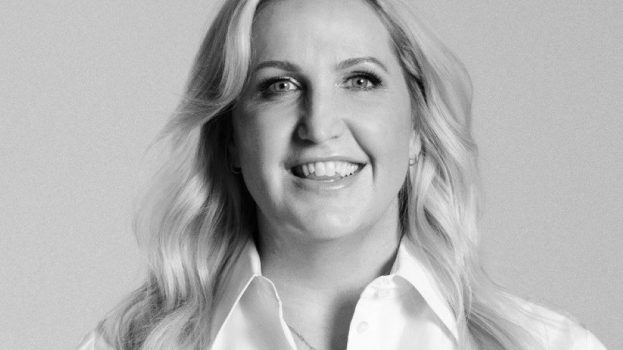A focus on French-Canadian personalities is one major difference between Elle Quebec and women’s magazines in English Canada.
Readers of Elle Quebec, a monthly magazine aimed at young French-Canadian women, see the world differently.
In a socio-demographic study of 2,600 Canadians, those respondents who said they read Elle Quebec reacted differently than the general population to a range of questions about their social values and beliefs.
Survey
Publications Telemedia-Hachette of Montreal, which publishes the magazine, has subscribed to the 3SC Monitor survey, conducted in Quebec by Montreal-based research firm crop, for three years running.
The results have allowed it to more closely tailor the women’s magazine’s editorial around the values of its readers, and its message to advertisers.
Danielle Paquin, editor of Elle Quebec, says the survey does not just identify a reader’s spending power.
More importantly, it measures attitudes so the magazine can get closer to its readership.
‘We do not categorize our readers by their status or demographics,’ Paquin says.
‘Their values are important to us,’ she says.
Common values
‘The reasoning is, two people with different social backgrounds may have similar views on the world. The annual survey seeks out the common values Elle readers hold, putting their backgrounds aside.
Paquin says Elle readers are leaders.
‘She can be a secretary, a lawyer, a professional businesswoman,’ she says. ‘But in a group, each is a leader. Others will look to her to see what she is doing, and will follow that example.’
Rival women’s magazines with whom Elle Quebec competes include Clin d’Oeil, Chatelaine and Femme Plus.
The annual 3SC Monitor survey this year asked 2,626 Canadians aged 15 and older a host of questions about their social values and buying habits.
Respondents were asked to fill out the questionnaires in their homes. Of them, 1,069 were French-Canadian consumers, of particular interest to Elle Quebec.
Trends
The survey annually tracks 57 sociocultural trends, asking respondents four questions about each arranged randomly.
Answers are statistically compared with those of previous years to indicate the strengths and direction of trends.
A professional interviewer takes the respondents through the survey, which takes just under two hours to complete.
The thoroughness of the survey has convinced Paquin her readers are unique.
‘We have found our readers have strong values,’ she says. ‘They are very independent people. They are also heavy consumers, but they are highly aware of what the market offers. So they want information on products available to them.’
To reflect its readers’ independence, the magazine has, in recent months, run articles on feminism, for example.
The September issue featured a ‘Dossier’ on the movement today, including inserts on leading movement figures such as Gloria Steinem, Naomi Wolf and Susan Faludi.
Issues of the magazine are also filled with features on ambitious and successful role models for Elle readers.
These include Mitsou, a leading Quebec rock singer; Lise Bissonnette, publisher of Le Devoir, a leading Quebec daily newspaper; and talk show host Lise Payette.
This focus on French-Canadian personalities is one major difference between Elle Quebec and women’s magazines in English Canada.
The magazine is clearly tailored to the French-Canadian market from which it draws its readership.
Asked how Elle Quebec readers were different from young women in the rest of Canada, Paquin offers a blunt response.
‘We won’t talk politics, but we’re certainly different,’ she says. ‘We have different values.’
The 3SC survey indicated Elle readers are decidedly more liberal than in the rest of Canada.
They are also travellers, who embrace multiculturalism and want to know more about different cultures.
So recent issues have included travel features on New York City, and far-flung Singapore and Morocco.
Because the survey revealed Elle Quebec readers are generally leaders, the magazine’s editorial is aimed at reflecting the latest trends.
Health issues
On health issues, for example, recent issues have talked about chronic fatigue syndrome and protection from harmful sun rays.
As part of the survey, Elle Quebec put forward its own set of questions to judge consumer reaction to its product.
Answers to these revealed Elle readers greatly differed from other magazine readers on the question of being original, rejecting authority and needing to ‘escape’ occasionally.
Paquin says, for advertisers, the lesson from the survey is, you can persuade Elle readers about your product only after informing them.
‘Our readers have values of their own,’ she says. ‘They are not followers. They don’t want a magazine that is a how-to manual.
They decide
‘They like to read articles explaining new trends, and they alone will decide whether to follow them.’
Armed with the survey results, Elle Quebec’s advertising sales force can now offer marketers the figures to prove their claims.
crop has provided a sociocultural map for any product.
For example, travel advertisers learn the Caribbean is the favorite destination of Elle readers. And recreation-wise, Elle readers prefer tennis above all other pursuits.
The accurate positioning of personal values was done by using a chart to indicate geographic, demographic and attitudinal differences between magazine readers and the Canadian population.
The chart was divided into four squares.
One side of the chart positioned values belonging to outer-developed people, the other side being for inner-directed people.
On top were positioned values of conformity, on the bottom those of non-conformity.
Elle Quebec readers posted an index score of 256 when asked about the ‘pursuit of originality.’
The index score 100 always represents the national average among Canadians.
Elle Quebec features the usual editorial mix of women’s magazines: fashion, health, sex, beauty, psychology, cooking.
But its articles often have a biting edge to them.
After all, the highest index score attained by Elle readers came on the question of pursuing intensity and emotional experiences.
‘The profile suggested Elle readers know what they like, and they feel that strongly,’ Paquin says. ‘So when they like something, they really love it. And when they dislike something, they hate it.
‘The magazine’s extensive fashion features underline this point. You will not find many designs for hand-knit sweaters for evenings by the fire.
Elle readers, the survey revealed, live in the city and like to go out so much of the fashion reflects avant-garde tastes for restaurants and night clubs.
Telemedia-Hachette uses the results of the 3SC survey for all its publications and radio stations.
Among other companies employing the 3SC survey are Hydro-Quebec, Coca-Cola, General Motors and Bell Canada.
Paquin says advertisers welcome the 3SC survey results.
‘Because of the recession, advertisers want greater efficiency,’ she says.
‘We are telling them, with these results, we know our readers more intimately,’ she says.
‘We know how to talk to them. We are getting closer to them.’























